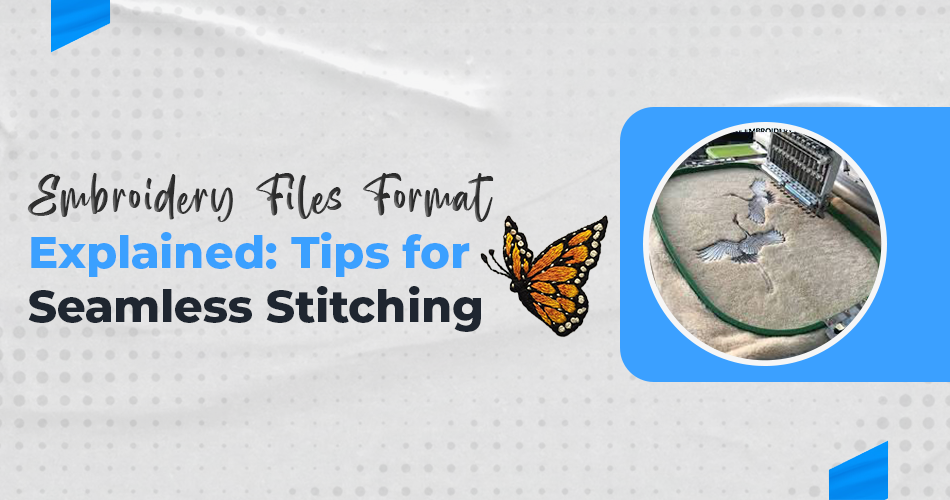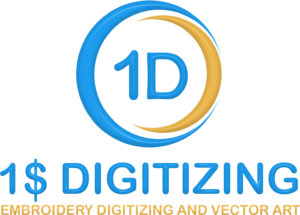When working with embroidery machines, understanding embroidery files format could be a crucial step toward accomplishing faultless comes about. Whether you’re a devotee investigating plans or a proficient overseeing complex ventures, knowing the correct file format for your machine is pivotal. This direct investigates the complexities of embroidery file types, contrasts between vector and embroidery files, and fundamental tips to guarantee consistent stitching.
What Are Embroidery Files Formats?
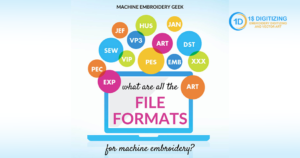
Embroidery files format are specialized computerized designs that interpret plan subtle elements into fasten informational for embroidery machines. These files go beyond visual graphics, encompassing precise data such as stitch type, length, sequence, and thread color. The right file format for embroidery ensures that the machine can replicate the design accurately on the fabric.
How Embroidery Files Work
Embroidery files function as a bridge between your design and the machine. Unlike regular image files like JPEGs or PNGs, embroidery files formats communicate stitching details. For example:
Stitch Path: Indicates where and how the needle moves.
Thread Colors: Assigns thread colors for each section.
Fabric Settings: Adapts the design to fabric types to avoid distortions.
Choosing the correct embroidery file type ensures efficiency and a high-quality finish.
Key Embroidery Files Formats
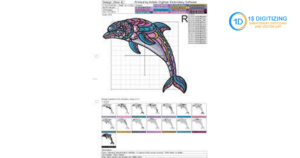
There are various file types for embroidery machines, each tailored to specific brands and functionalities. Let’s delve deeper into the most commonly used formats and their benefits.
1. PES Format
PES files are primarily used with Brother and Baby lock embroidery machines. This format includes extensive stitch data and supports multi-layered designs with varying thread colors. Its popularity stems from its ability to maintain intricate details without losing quality.
2. DST Format
DST is a universal format compatible with a wide range of embroidery machines, particularly Tajima models. It is a stitch-only format that lacks thread color data, making it ideal for industrial applications. Its simplicity ensures stability during machine operation.
3. JEF Format
Native to Janome machines, JEF files are versatile and user-friendly. They include precise stitch instructions and thread color data, making them suitable for both beginners and professionals.
4. EXP Format
EXP files, or expanded files, are commonly used with Malcom and Bernina machines. Although these files provide stitch instructions, they may require additional editing for accurate color and layering information.
5. VP3 Format
VP3 files are designed for Husqvarna Viking and Pfaff machines. These advanced files offer superior stitch management, supporting highly detailed designs with multiple color layers.
Vector File Formats vs. Embroidery Files

It’s essential to distinguish between vector file formats and embroidery files, as each serves a unique purpose in the design-to-stitching process.
What Are Vector Files?
Vector files, such as SVG, AI, and EPS, are commonly used in graphic design. These files use mathematical formulas to define shapes, ensuring scalability without quality loss. They are ideal for creating intricate designs but need to be converted into embroidery files to be used with machines.
Converting Vector Files to Embroidery Files
Vector designs are converted into embroidery files format through a process called digitizing. This involves assigning stitch properties—such as type, direction, and density—to the vector design. Popular software like Wilcom and Hatch makes this transition seamless.
How to Choose the Right File Format for Your Embroidery Machine
Choosing the right file format for embroidery depends on your machine and project requirements. Follow these steps to ensure compatibility and efficiency:
1. Identify Machine Compatibility
Every embroidery machine has specific file requirements. Refer to the user manual or the manufacturer’s website to determine which file types are supported. Commonly supported formats include PES, DST, JEF, and VP3.
2. Use Conversion Software
If your design is in an unsupported format, use digitizing or conversion software to adapt it. For example, convert a PNG image into a PES file for Brother Machines using tools like Brilliance.
3. Test the File
Before committing to a final project, test the embroidery file on scrap fabric. This allows you to identify any errors in stitch direction, density, or color allocation.
Essential Tools for Managing Embroidery Files
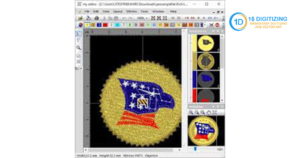
Working with embroidery files requires robust software tools. Here are some top choices for creating, editing, and converting designs:
1. Wilcom
Wilcom is a professional-grade embroidery software that supports a wide range of file formats. It offers advanced digitizing tools and compatibility with popular machines.
2. Brilliance
Perfect for both beginners and experts, Brilliance provides easy-to-use features for editing and converting embroidery designs.
3. Hatch
Hatch by Wilcom is a versatile tool for designing and managing embroidery files. Its user-friendly interface and extensive features make it a favorite among enthusiasts.
4. Ink/Stitch
This free extension for Inscape allows users to convert vector file formats like SVG into embroidery files format, making it a budget-friendly option.
5. Pulse Software
Pulse is an industrial-grade software solution for creating and managing embroidery designs. Its robust features cater to large-scale production needs.
Best Practices for Seamless Stitching
Achieving flawless embroidery requires attention to detail and proper file management. Here are some tips to enhance your stitching process:
Organize Your Files
Create a systematic filing system to categorize designs by project, file format, and machine compatibility. This prevents confusion and saves time during production.
Backup Your Designs
Always keep multiple backups of your designs. Save files in various formats to ensure compatibility across different machines and software tools.
Update Software Regularly
Keep your embroidery software and machine firmware updated to access the latest features and ensure smooth operation.
Optimize Stitch Density
Adjust stitch density to suit the fabric type. High density on delicate fabrics can lead to puckering, while low density may result in gaps.
Use High-Quality Threads
Invest in durable, colorfast threads to prevent breakage and fading. Pair the thread quality with the machine’s speed settings for optimal performance.
Frequently Asked Questions about Embroidery Files Format
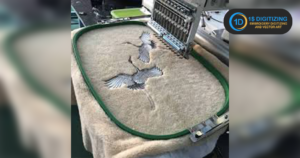
What File Format Is Best for Apprentices?
For apprentices, PES files are an incredible beginning point due to their far reaching compatibility and natty gritty fasten data.
Can I Utilize JPEGs or PNGs for Embroidery?
No, standard picture formats like JPEG and PNG are not appropriate for embroidery machines. These files got to be digitized into formats like PES or DST.
How Do I Digitize a Plan?
Digitizing includes changing over a realistic plan into an embroidery record utilizing computer program like Wilcom, Bring forth, or Brilliance. This prepare incorporates setting stitch types, densities, and bearings.
Can I Alter Embroidery Files?
Yes, embroidery files formats can be altered utilizing consistent program. Be that as it may, alters ought to be made carefully to maintain a strategic distance from disturbing the fasten arrangement.
Conclusion
Acing embroidery files formats may be an expertise that hoists your embroidery ventures to a proficient level. By understanding the contrasts between well-known groups, changing over vector plans, and utilizing the proper instruments, you’ll accomplish consistent stitching and immaculate comes about.


